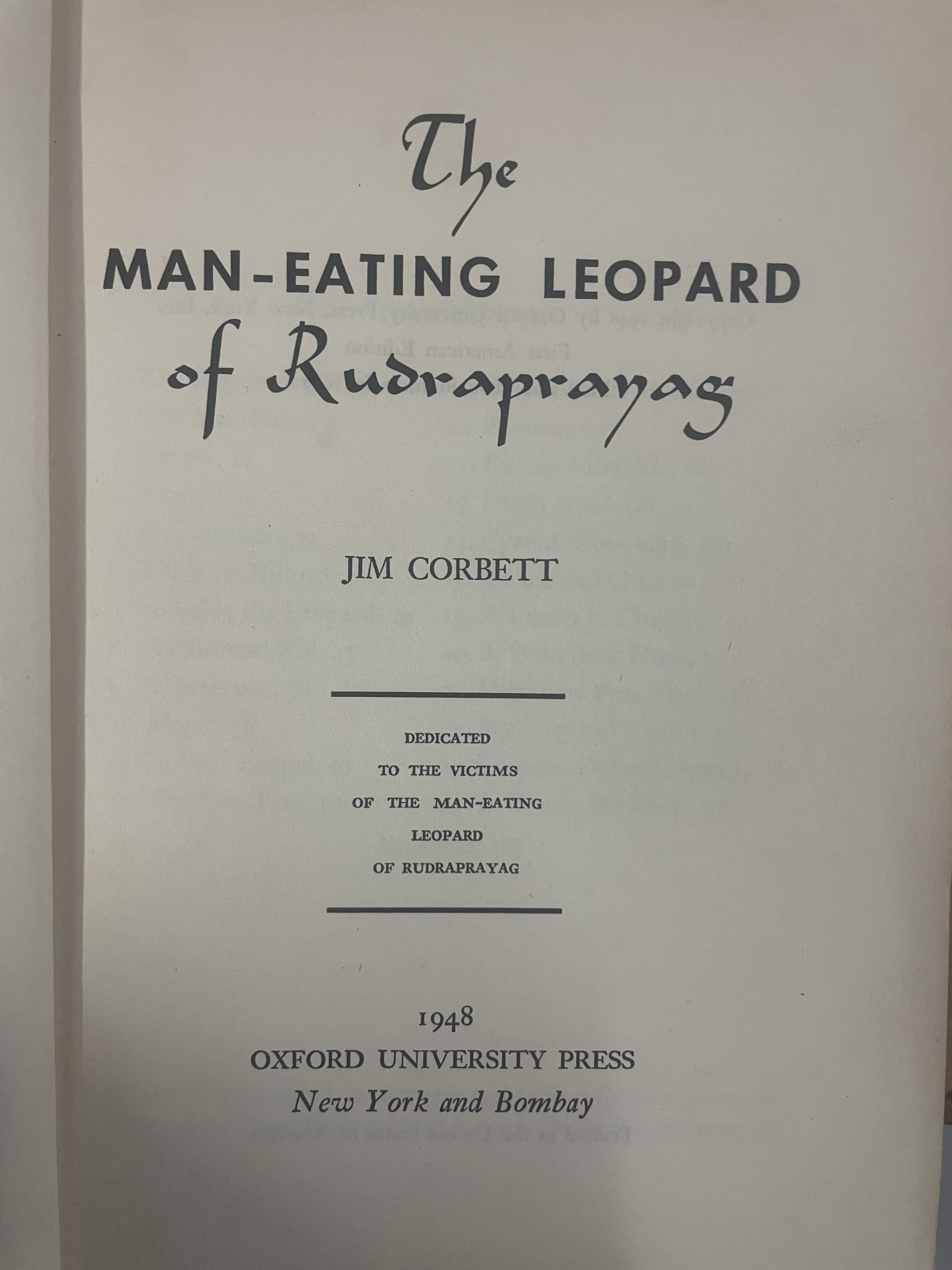The Man Eating Leopard of Rudraprayag

About
Summary
Exquisite
TOC
Details
Related
URL
Images
Overview
The Man-Eating Leopard of Rudraprayag is a book by Jim Corbett detailing his hunt for a man-eating leopard in the Rudraprayag district of India. Corbett was a British hunter, author, and conservationist known for hunting man-eating tigers and leopards in India.The Man-Eating Leopard of Rudraprayag recounts Jim Corbett's pursuit of a leopard responsible for killing an estimated 125 people over eight years in the Rudraprayag region. The book describes the fear and disruption the leopard caused in the local communities and Corbett's efforts to track and kill the animal. It highlights the challenges of hunting a cunning predator and the relief brought to the villagers upon its demise.The book details the events that led to the leopard becoming a man-eater and the impact it had on the local population. The initial human kill in Rudraprayag occurred on June 9, 1918, and the last on April 14, 1926. The leopard terrorized the inhabitants of the Rudraprayag valley for eight years. The book explores the reasons why the leopard turned to human predation. Corbett believed that the leopard, a large elderly male, started hunting people after scavenging on corpses of those who died during the 1918 global flu epidemic, when proper last rites were difficult to perform.
The narrative follows Corbett's journey through the jungles, villages, and streams as he gathers information and attempts to track down the leopard. The book describes Corbett's strategies, including using bait and surveillance, and his interactions with the local villagers who provided valuable assistance. It also recounts the constant failures and frustrations Corbett faced during the hunt.
The climax of the book is the final confrontation where, after years of searching, Jim Corbett finally locates and shoots the man-eater around 10 p.m. on May 2, 1926.
Importance of Book
Wildlife Literature: It is a notable work of wildlife literature, offering detailed descriptions of the Indian jungle, its flora and fauna, and the behavior of leopards.
Historical Record: The book provides a historical record of the challenges faced by rural communities living in close proximity to wildlife.
Conservation Message: It raises awareness about the importance of wildlife conservation and the need to manage human-wildlife conflict.
Adventure Narrative: The book is an adventure story, filled with suspense and danger, making it a compelling read.
Key Themes
Man vs. Nature: The book explores the conflict between humans and nature, particularly when an animal becomes a threat to human life. Corbett's hunt represents an attempt to restore balance and protect human communities from the dangers posed by the man-eater.
Colonialism and Responsibility: Set against the backdrop of British colonial rule in India, Corbett, a colonial hunter, feels responsible for protecting the local population from the man-eater.
Courage and Determination: Corbett's hunt is portrayed as a courageous and challenging endeavor, requiring immense patience, skill, and determination. He often faces danger alone, spending hours in the jungle, tracking and waiting for the leopard.
Community and Cooperation: The engagement with local villagers plays a critical role in Corbett’s strategy. He relies heavily on the villagers.
Respect for Wildlife: Corbett demonstrates a profound respect for the natural world and its creatures.
Cultural Significance
Popularizing Wildlife Conservation: The book played a role in popularizing wildlife conservation in India and beyond.
Shaping Perceptions of Leopards: It influenced how leopards are perceived, promoting a more informed understanding of their behavior.
Inspiring Conservation Efforts: The book has inspired conservation efforts aimed at protecting leopard habitats and reducing human-wildlife conflict.
Effects on Society
Raising Awareness: The book raised awareness about the challenges faced by rural communities living in leopard habitats.
Promoting Understanding: It promoted a better understanding of the complex relationship between humans and wildlife, encouraging a more compassionate approach to conservation.
Conclusion
Corbett's mission was not just a hunt; it was a battle for the soul of the community. He wanted to rid the land of its most feared occupant and restore peace to Rudraprayag.
Title
The Man Eating Leopard of Rudraprayag
Author
Jim Corbett
Name of Publisher
Oxford University Press
Publish Date
1948
Subject
Hunting a notorious leopard
Vintage
1948-2000
Edition
First
Category
Wild life
Sub Category
Social Sciences
Rarity
RARE
